
Maiden Voyage, Oct 10, 1930

Prescotont in Kingston drydock
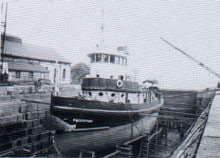
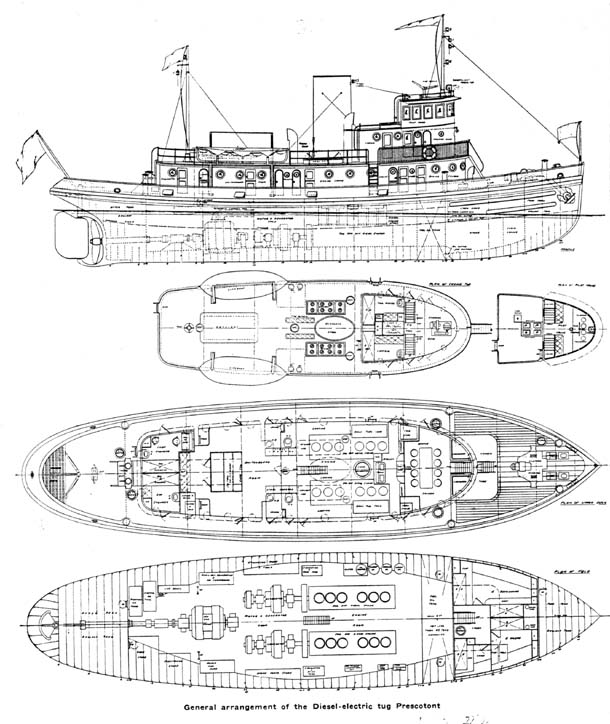
Original Architect Drawings, 1930
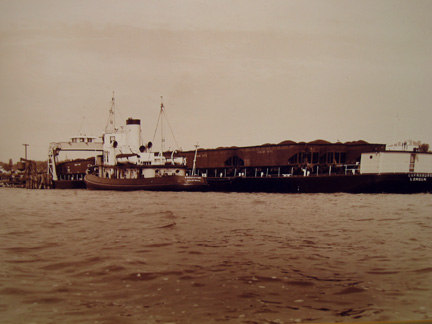
Pushing the Ogdensburg barge
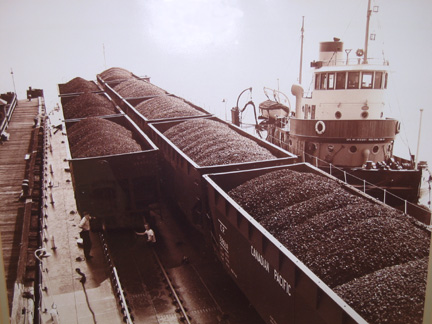
With Coal Train on Ogdensburg

Under power, deep in the water, 1948
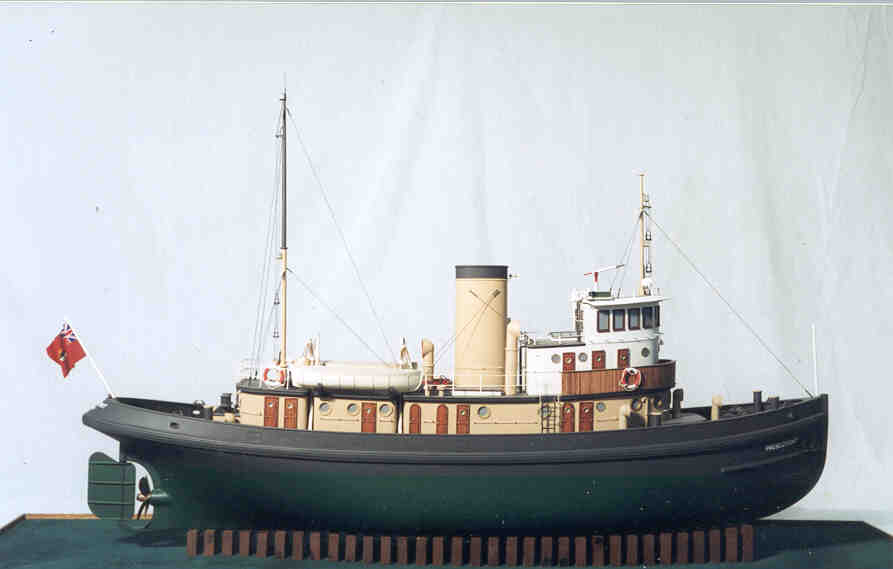
Model with original colours

Maiden Voyage, Oct 10, 1930

Prescotont in Kingston drydock


Original Architect Drawings, 1930

Pushing the Ogdensburg barge

With Coal Train on Ogdensburg

Under power, deep in the water, 1948

Model with original colours
Reprinted from Marine Review - December 1930
A vessel of particular interest and incidentally the first of her type constructed in Canada is the diesel tug PRESCOTONT which has been built at the Davie Shipbuilding and Repairing Co.'s yard at Lauzon, Que. to the order of the Canadian Pacific Car and Passenger Transfer Co. Ltd. which company operates a railway ferry service in the joint interests of the Canadian Pacific Railway and the New York Central Railroad.
The PRESCOTONT tows the new car float Ogdensburg between the New York Central terminal at Ogdensburg N.Y., and the Canadian pacific terminal at Prescott, Ont. When the float is ready to leave, the tug noses up, the two boats are tied together, an electric connection is made and the pilot leaves the tugboat and boards the car float. The trip is then made with the pilot on the bridge of the towed boat, all the operations of the machinery on the tug, steering, etc., being controlled from that point. This remote control was essential to proper operation of the towing system,as the tugboat is small compared to the carfloat and were the pilot to remain on the tug, he could not see well enough in all directions to control the movements of the two boats. The special remote control employed was designed and built by the General Electric Co., who also built the propulsion equipment on the tug.
The PRESCOTONT is of steel specially strengthened for ice breaking for all year round service and as built to the requirements of the Canadian steamboat inspections and Lloyd's Register, being rated 100 A1 for towing purposes.
Her keel was laid June 30 (1930), the vessel launched on Sept 11 and delivered ready for service after carrying out satisfactory trials on Oct. 10, which is considered a record for a vessel of this type. her principal dimensions are as follows: Length overall, 117 feet; breadth overall 27 feet; depth, 13 feet 6 inches, extreme, 12 feet; speed, 11 knots.
The propelling machinery comprises two Model 6-174 4 cycle Winton airless injection diesel engines connected directly to the main and auxiliary generators, each engine having six cylinders 15 inch bore by 22 inch stroke,developing 500 brake horsepower as 245 revolutions per minute.
The electric equipment in conjunction with the diesel engines was supplied by the General Electric Co., and is as follows: Propulsion Motor: 1 double-unit, 800 horsepower, 105/135 revolutions per minute, 500 volt motor; main generators: two 330 kilowatt, 245 rpm, 250 volt generators; auxiliary generators: two 50 kilowatt, 245 rpm, 120 volt direct current for excitation of main generators and propulsion motor and for auxiliary power. These generators and connected to the main generators: switchboards: 1 control panel for the main generators and propulsion motor, 1 pilot house panel, 1 auxiliary generator panel and a distribution switchboard for various auxiliary motors about the vessel; prpulsion-motor ventilating set: consists of one Buffalo Forge co., size 4 1/2 duplex conoidal fan, to deliver 6100 cfpm at 2.1 in static pressure, and driven by CDM-73, 5 horsepower, 850/960 rpm, 115 volt, shunt-wound motor.
Propulsion power is obtained from the two diesel electric units, consisting of a direct current electricgenerator driven ba a diesel engine; each generator mountsm a direct-connected auxiliasry generator. Electric power is generated in the main generators and is transmitted to a double-unit propulsion motor. The power from the generators to the motoer is controlled by rheostats and switches mounted on or operated from the main control switchboard. Operating of the tugboat may be controlled from the panel in the engine room or from the pilot house by means of two controllers, one located at the engine room control panel and one in a compartment under the floor of the pilot house.
In order that the tugboat may be contolled from the car float, there are, installed on the car float, a controller, two operating pedistals and a speed indicator. This equipment is connected to the equipment aboard the tugboat by cables and is operated in the same manner as the tugboat equipment